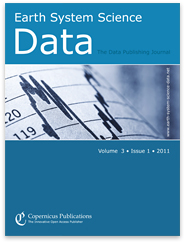The Northern Circumpolar Soil Carbon Database
More information
This website provides information and data from the Northern Circumpolar Soil Carbon Database version 2 (NCSCDv2), a spatial dataset created for the purpose of quantifying storage of organic carbon in soils of the northern circumpolar permafrost region.
The earth system holds large carbon pools which, if destabilized through changes in climate and land use, can lead to accelerated emissions of greenhouse gases to the atmosphere. Carbon stored in permafrost soil is one of the least understood and potentially most significant carbon-climate feedbacks because of the size of the carbon pools and the intensity of climate forcing at high latitudes. In the past, the areal extent of permafrost soils and the carbon pools they contain have been underestimated. The NCSCDv2 was compiled to address this problem by accounting for the full spatial extent of permafrost affected soils as well as the specific soil processes that lead to long-term carbon sequestration in these soils. In total, almost 25 % of all land in the Northern Hemisphere is affected by permafrost (18.7×106 km2). In these areas, permafrost soils have been estimated to store 1,672 Pg carbon, which is more carbon than what is currently stored in all the combined atmosphere and living vegetation of the earth.
The spatial base of the NCSCDv2 is a polygon database describing soils in the northern circumpolar permafrost regions. The database was compiled by combining and homogenizing several regional/national soil maps. To calculate storage of soil organic carbon, these soil maps have been linked to field-data on soil organic carbon storage from a total of 1,647 sites from around the circumpolar permafrost region.
The database was developed as a collaborative effort by scientist from Canada, USA, Russia and Europe. The digitization and translation to English of the individual soil maps were supported by the USDA National Soil Survey Center. Database development, GIS work and data analyses for the original NCSCD were supported by the Research Branch of Agriculture and Agri-Food Canada. The work with the updated NCSCD version 2 was supported by Bolin Centre for Climate Research at Stockholm University, the International Permafrost Association, the EU 7th framework PAGE21 project, the Nordic Centres of Excellence DEFROST project and a grant of the Swedish Research Council as a part of the International Program CryoCARB. This effort is also a contribution to the Global Carbon Project of the Earth System Science Partnership, the Carbon Pools in Permafrost regions Project of the International Permafrost Association and the Permafrost Carbon Network.
The NCSCDv2 contains information on fractions of coverage of different soil types (following U.S. Soil Taxonomy nomenclature) as well as storage of soil organic carbon (kg/m2) between 0–30 cm, 0–100 cm, 100–200 cm and 200–300 depth. The NCSCDv2 is available either as a polygon-based database (which is the original format) or converted to gridded data. Gridded data products are available in different spatial grid resolutions and in formats adapted for use in desktop GIS-applications and model applications.
Download data
- Polygon based GIS data (shape-files)
- Gridded GIS data (tiff-files)
- Gridded data in network common data form (netCDF-files)
Publications
For a detailed scientific description of the creation of the NCSCDv2 and the gridded dataset available see this paper published in the journal Earth System Science Data Discussion. Please refer to this paper if you make use of any dataset downloaded from this site:
